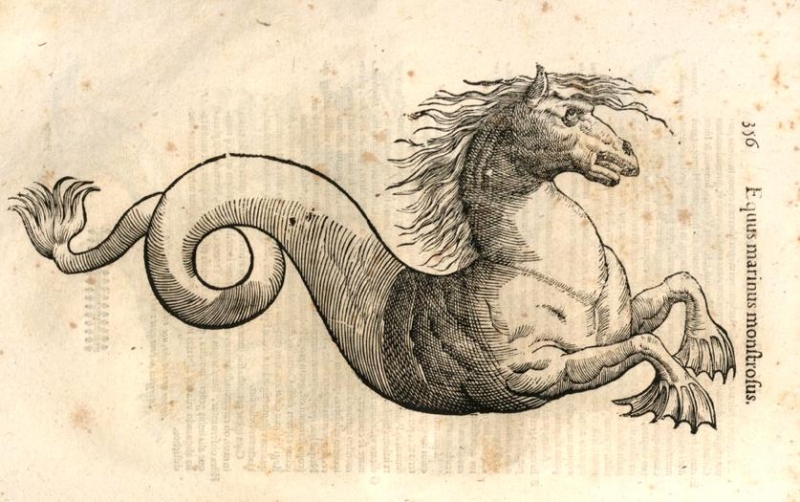Brain code and memory. Hippocampus puzzle

More recently, the Nobel Prize winners of 2014 were announced. The prize in physiology or medicine was shared by American John O'Keefe and his wife, Norwegians Edward Moser and May-Britt Moser. The studies that received such a high score dealt with a small area of the brain called the hippocampus. This name comes from the Greek ππόκαμπος - seahorse, this amazing organ resembles something to it.

In 1971, John O'Keefe discovered the place cells in the hippocampus (O'Keefe J., Dostrovsky J., 1971). These cells react like an internal navigator. If a rat is placed in a long corridor, then by the activity of certain cells it will be possible to say exactly in which place it is located. Moreover, the reaction of these cells will not depend on how she got into this place.
')
In 2005, in the entorhinal region of the cortex, which is part of the hippocampal formation, Mosers discovered neurons that encode a position in space, forming something like a coordinate grid (Hafting T., Fyhn M., Molden S., Moser MB, Moser EI, 2005) .
It is quite natural that both of these discoveries were combined into one award with the wording: for the discovery of the cells that make up the positioning system in the brain.
But these discoveries did not remove the questions about the role of the hippocampus, but rather multiplied them. In 2011, it turned out that in the hippocampus there are cells that in a certain way encode time intervals. Their activity forms rhythmic patterns, even if nothing else happens around (Christopher J. MacDonald, Kyle Q. Lepage, Uri T. Eden, Howard Eichenbaum, 2011). That is, it turns out that in addition to orientation in space, the hippocampus is also responsible for orientation in time.
But moreover, it has long been shown that it is the hippocampus that plays a key role in memory formation. In 1953, the patient, who is called HM, was completely removed by the surgeon's hippocampus (W. Scoviille, B. Milner, 1957). It was a risky attempt to cure severe epilepsy. It was known that removing the hippocampus of one of the hemispheres really helps with this disease. Given the exceptional power of epilepsy in HM, the doctor removed the hippocampus on both sides. As a result, HM's ability to memorize something completely disappeared. He remembered what was with him before the operation, but everything new flew out of his head as soon as his attention switched. The mysteriousness is enhanced by the fact that the removal of the hippocampus is only from one side or from both sides, but partial, the ability to memorize a new one is hardly affected.
There are hypotheses that the hippocampus is a repository of short-term memory, which is then redistributed into long-term memory, like the computer's RAM. But no one was able to give a clear explanation of how such a memory can be arranged and how memories can be transferred from place to place.
Of course, it can be assumed that the hippocampus is simply a place in the brain where several completely different systems intersect, each with its own independent function. But, following the logic of a good detective, all these wonderful properties of the hippocampus can not be a coincidence. In a detective story, and in science, always the same, there should be such an explanation, which will show the inextricable link of all the evidence and highlight their hidden meaning.
It is easy to figure out that the solution to the hippocampus should, no less, explain how the human memory is arranged. But it is clear that it is impossible to explain a memory device without answering questions about how the brain generally encodes and processes information. Unfortunately, there are no generally accepted theories on this topic. The difficulty is that the information algorithms implemented on computers cannot be compared with the work of the real brain neurons. And those opportunities that are usually attributed to biologically reliable neural networks do not allow to implement anything a little bit interesting.
Those who read my previous materials know that I am working on a model of the cortex, which I call pattern-wave. Of course, this will sound immodest, but it seems that the main mysteries of the informational code of the brain and the memory mechanism in this model have been resolved. So it turns out that not the last place in this explanation is given to the most mysterious hippocampus. In the pattern-wave model it turned out to naturally bring together all of his amazing properties. And not to fit the explanation to how all of the above can get along together, but to show that in that memory model, which is characteristic of the real crust in my approach, all the properties of the hippocampus are inevitably predetermined.
If I managed to intrigue you, below is a relatively recent lecture record, where my explanation of the principles of the brain and the role of the hippocampus in all this is given.
Unfortunately, “Lectorium” , which kept the record, badly screwed up with the sound, in connection with which I hesitated for a long time whether to put it on Habr (Jgtime). But such a coincidence as the Nobel Prize specifically for research on the hippocampus was the decisive argument for.
The continuation of thinking and the role of emotions .
UPD.
Thanks to user Alexufo for sound processing, which somewhat reduced the interference.
Source: https://habr.com/ru/post/361893/
All Articles